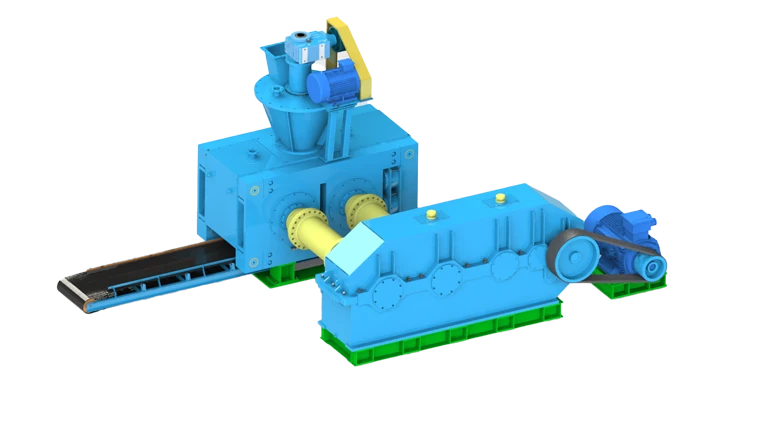Pressure setting for briquetting machine
A common question among many first-time users of briquetting machines is: How to determine the optimal working pressure for the equipment? This seemingly simple choice is intrinsically linked to the economics of production costs. Setting the pressure too high, while increasing briquette strength, drastically accelerates roller sleeve wear, significantly shortening maintenance and replacement cycles and sharply increasing spare parts costs. Conversely, setting the pressure too low results in insufficient briquette strength, fragility, or irregular shapes, failing to meet the basic requirements of subsequent processes such as transportation, smelting, or chemical reactions.

Therefore, pressure selection is not merely an isolated adjustment of a technical parameter, but a comprehensive decision involving equipment durability, operating costs, and compatibility with downstream processes. It is intricately influenced by multiple factors such as raw material characteristics, binder type, throughput targets, and subsequent process requirements. Consequently, it is difficult to provide a universal "standard answer." A tailored solution must be sought by delving into the specific production site and its complex operational realities.
The core to solving the pressure selection challenge lies in clarifying the objective: The fundamental purpose of using a briquetting machine is not "briquetting" itself, but providing qualified raw material briquettes for subsequent production processes. The appropriate pressure is simply that which produces briquettes meeting the requirements of the next process (e.g., strength, particle size, thermal stability). Practical flexibility exists: We have assisted clients in significantly reducing the initial strength requirement for briquettes by optimizing downstream processes (e.g., modifying sintering parameters or adjusting the connection method of subsequent conveying equipment). This allowed the entire production line to operate stably at lower briquetting pressure, saving energy while extending equipment lifespan. Similarly, successful cases abound where switching to more efficient binder formulations substantially reduced the difficulty of raw material forming, effectively lowering the required briquetting pressure and costs.
In summary, the key principle for selecting briquetting machine pressure is not pursuing a theoretical "maximum" or "optimum" value, but pragmatically finding the "fit-for-purpose value" that best aligns with one's specific raw material characteristics, process route, and overall economic benefit. The pressure that best suits the unique needs of the site is the true optimal pressure.
The core to solving the pressure selection challenge lies in clarifying the objective: The fundamental purpose of using a briquetting machine is not "briquetting" itself, but providing qualified raw material briquettes for subsequent production processes. The appropriate pressure is simply that which produces briquettes meeting the requirements of the next process (e.g., strength, particle size, thermal stability). Practical flexibility exists: We have assisted clients in significantly reducing the initial strength requirement for briquettes by optimizing downstream processes (e.g., modifying sintering parameters or adjusting the connection method of subsequent conveying equipment). This allowed the entire production line to operate stably at lower briquetting pressure, saving energy while extending equipment lifespan. Similarly, successful cases abound where switching to more efficient binder formulations substantially reduced the difficulty of raw material forming, effectively lowering the required briquetting pressure and costs.
In summary, the key principle for selecting briquetting machine pressure is not pursuing a theoretical "maximum" or "optimum" value, but pragmatically finding the "fit-for-purpose value" that best aligns with one's specific raw material characteristics, process route, and overall economic benefit. The pressure that best suits the unique needs of the site is the true optimal pressure.